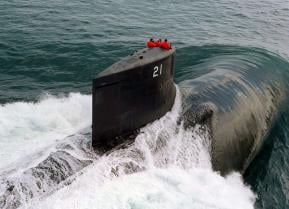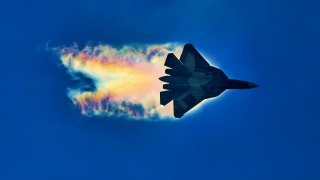Russia's Su-57 Felon Stealth Fighter Is a Mess
Russia hopes to acquire at least 78 Su-57 Felon stealth fighters by 2028. However, this number seems far too ambitious for a country struggling to stay afloat in a nearly two-year-long war in Ukraine.
Russia’s Su-57 Felon, Explained: As the race to develop a sixth-generation platform continues, Moscow is hoping to leverage its Sukhoi Su-57 fighter as a ‘stepping stone’ to be the first.
The U.S. was the first country to introduce a fifth-generation platform to service with the F-22 Raptor. Since then, the F-35 Joint Strike Fighter has also emerged, along with China and Russia’s own fifth-gen platforms, the Chengdu J-20 and Sukhoi Su-57, respectively.
While both Moscow and Beijing have touted that their fighters feature top-of-the-line capabilities, their exact specs and functions remain unknown.
Both terms “fifth-generation” and “sixth-generation” have yet to be formally defined, however, these labels are often attributed to airframes equipped with different designs than their fourth-generation predecessors. Additionally, these platforms possess stealth features.
Back in 2022, the Director of Moscow’s United Aircraft Corporation (UAC) revealed that the Sukhoi-57 will be used as a basis for its next-generation platform.
Introducing the Su-57 Felon
Before introducing the Su-57, Russia relied heavily on aging Cold War-era airframes.
By the early 1980’s, the USSR began researching future platforms. The Soviets created the I-90 next-generation fighter program, which was originally comprised two projects designed to meet the government’s requirements for a multi-role fighter.
Quickly following the dissolution of the USSR, Russia’s Ministry of Defense drafted the PAK FA program, which aimed to develop one replacement airframe for the MiG-29 and Su-27.
In the late 1990’s, Russian manufacturer Sukhoi developed the twin-engine fifth-generation stealth fighter. The Su-57 then took its maiden flight in 2010. Designated by the North Atlantic Treaty Organization (NATO) as “Felon,” the Russian fighter was created to better counter other fifth-generation fighters - most notably the American-made F-22 Raptor and F-35 Lightning II.
Sukhoi used older airframes to test a range of subsystems and concepts, including the Su-47 tested internal weapons bays and Su-27M flight control systems and engines.
Additionally, the Russian manufacturer installed some of the T-50’s technology and capabilities, such as propulsion and several avionics, in an advanced variant of the Su-27.
From the early stages of Russia’s PAK FA program, the Kremlin was eager to bring in foreign clients on the project to increase funding and to secure large export orders down the line.
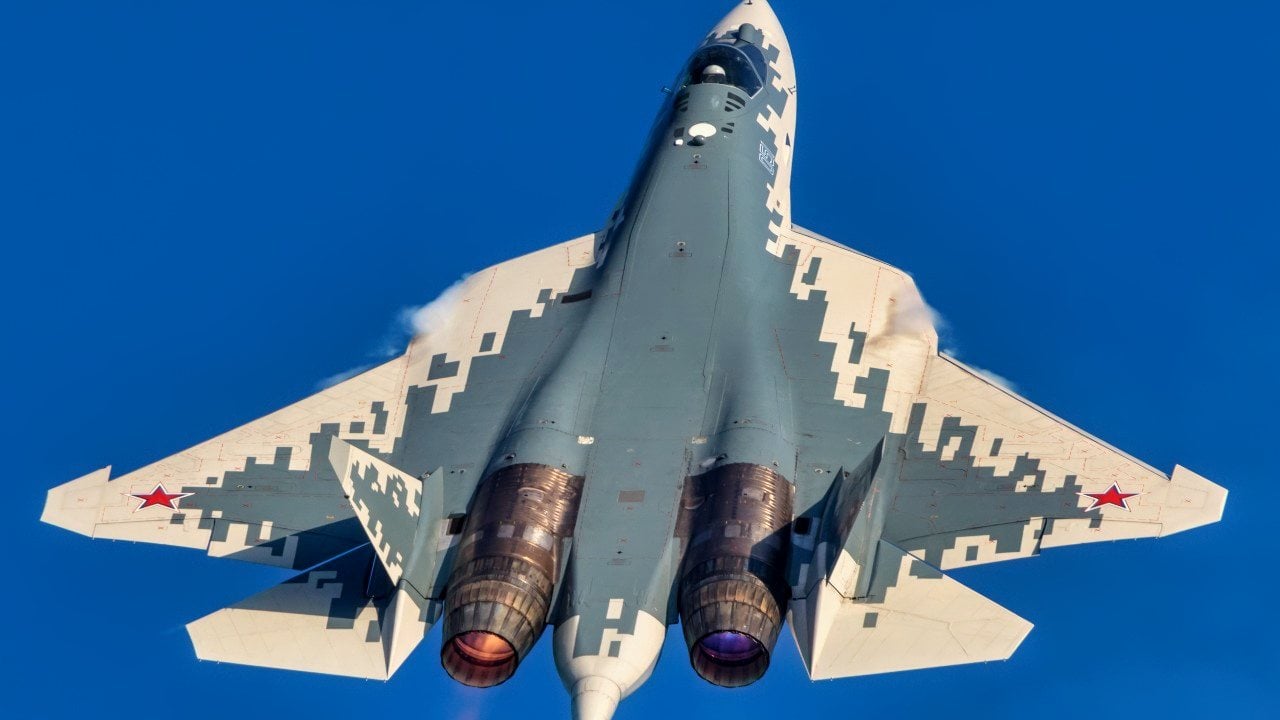
By 2007, Russia and India signed an agreement for Hindustan Aeronautics Limited and Sukhoi to collaborate on a singular derivative of the new Fifth Generation Fighter Aircraft.
Ultimately, however, India withdrew from the contract due to cost and performance issues.
Su-57: What We Think We Know So Far
Although the exact nature of the Felon’s capabilities remains unclear due to a lack of verifiable intelligence and the fighter’s limited operational flights, the jet certainly is the country’s most advanced aerial platform.
Even though analysts and aviation experts largely agree that the Su-57 is less stealth than its American counterparts, the Felon is still the stealthiest airframe in Moscow’s fleet.
The fighter is theoretically fitted with 3D thrust vectoring controls, supermaneuverability, and extensive internal payloads for multirole versatility.
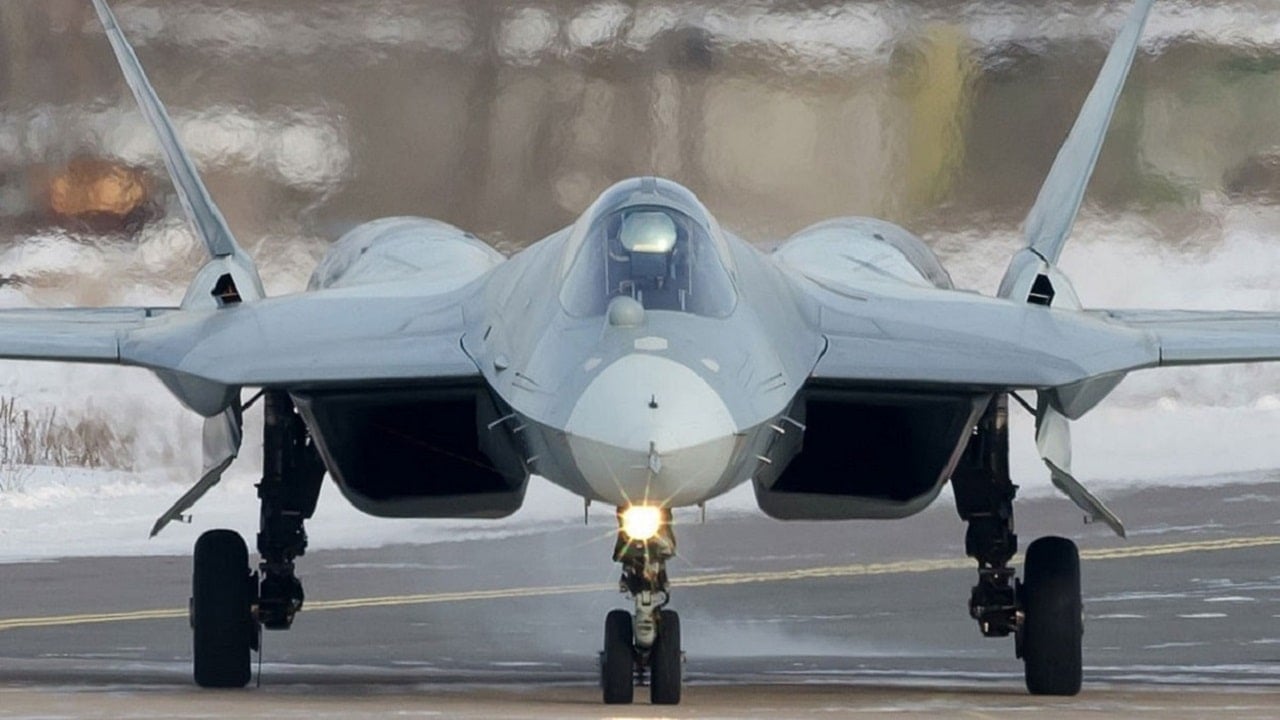
In terms of avionics, the Felon also sports several enhancements over its predecessors. The jet is installed with the most sophisticated onboard radio-electronic equipment, according to Air Force Technology. Its onboard avionics systems include active electronically scanned array (AESA) radar and ELINT systems.
The Su-57 can carry air-to-surface missiles and air-to-air missiles alike. Additionally, this platform features a 30mm air gun for close combat operations. Two side bays store the short-range air-to-air missiles while two internal weapons bays mounted between the engines can hold additional ordinances. Aviation experts concur that the Felon’s weapons carrying capacity is likely its biggest asset. Since the Su-57 can carry weapons internally, this minimizes drag and allows the fighter to maintain a low radar profile which aids in its ability to stay undetected by enemy aircraft.
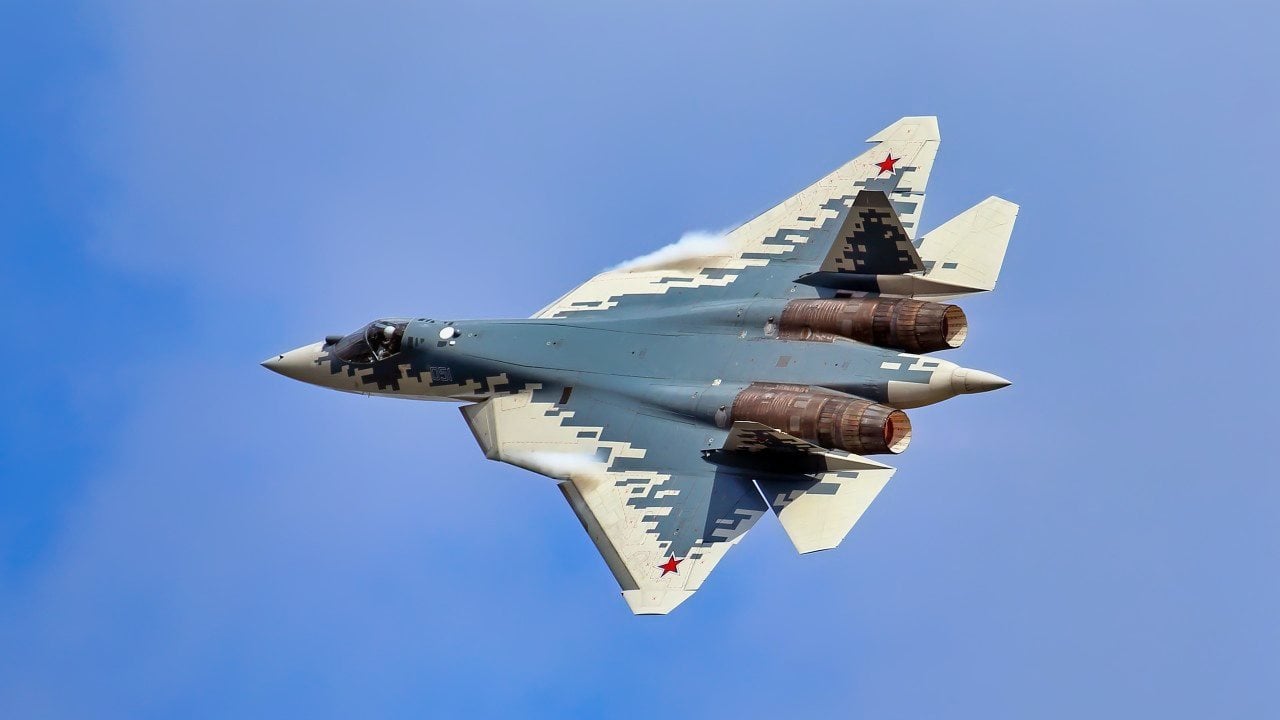
What issues is the Felon facing?
Perhaps the biggest flaw concerning the Su-57 is sheer quantity.
Even if the Felon is more capable than experts believe, the simple fact is that Moscow simply does not possess many of them.
Multiple reports that have been publicized indicate that Russia may only have somewhere between 4 and 15 operational S-57 airframes. For this reason, the Felon has not played an active role in Russia’s ongoing invasion of Ukraine.
Russia hopes to acquire at least 78 Su-57 Felon stealth fighters by 2028. However, this number seems far too ambitious for a country struggling to stay afloat in a nearly two-year-long war in Ukraine.
About the Author
Maya Carlin is an analyst with the Center for Security Policy and a former Anna Sobol Levy Fellow at IDC Herzliya in Israel. She has by-lines in many publications, including The National Interest, Jerusalem Post, and Times of Israel. You can follow her on Twitter: @MayaCarlin.
All images are Creative Commons.
